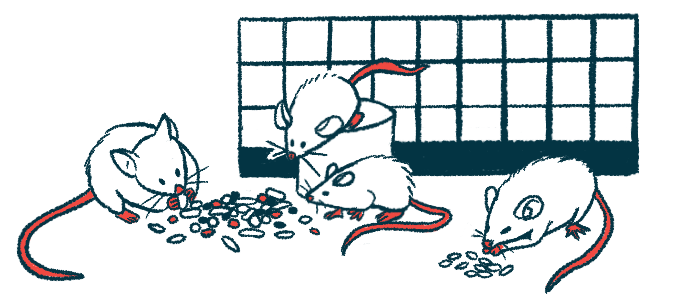Treating Rett mice with hNGFp aids survival, normalizes behavior
The modified NGF molecule has a marked reduction in pain-sensitizing activity

Treatment with a modified version of a signaling molecule called NGF improved survival and normalized behavior in a mouse model of Rett syndrome, a new study reports.
The study, “Reversal of neurological deficits by painless nerve growth factor in a mouse model of Rett syndrome,” was published in Brain.
NGF, which stands for nerve growth factor, helps control the growth and health of nerve cells. Research has shown that people with Rett syndrome have abnormally low levels of it, which may contribute to the disease.
Theoretically, treating Rett syndrome with NGF might be beneficial. A major drawback to using it is that it can powerfully activate pain-sensing nerve cells, so any treatment that uses the naturally occurring version would be very painful to administer.
Scientists in Italy created a modified version of the human NGF molecule that retains most of its signaling capabilities, except it has “a greater than tenfold reduced pain-sensitizing activity.” They dubbed the molecule human NGF painless, or hNGFp.
Effect on behavioral problems in Rett mouse model
The researchers tested the effects of hNGFp in a female mouse model of Rett syndrome. For the experiments, hNGFp was administered through the nose.
In the first set of experiments, Rett mice were given long-term treatment that started at age 2 months, which is just before the typical appearance of symptoms in this mouse model. The mice were given either hNGFp or an inactive vehicle three times a week, with weekly assessments of behavior.
Without treatment, the mice in this model show a number of behavioral abnormalities, including changes in walking and breathing, alterations in general movement, and differences in clasping with the hind limbs.
Mice treated with hNGFp had markedly fewer behavioral differences. They also performed significantly better on a test where they had to walk across a long beam.
Treating them with hNGFp also led to a significant increase in their lifespan, by a median of 30%.
“Lifelong treatment of [Rett] mice with nasally delivered hNGFp, starting at 2 months of age, ameliorates in a very significant way behavioral parameters, and increases survival, suggesting a strong neuroprotective action of potentially high clinical relevance,” the researchers wrote.
In a second set of experiments, Rett mice were given hNGFp for one month after the onset of behavioral deficits. This led to normalization of walking and limb clasping behaviors, but not other behaviors.
Analyses showed hNGFp helped normalize several differences characteristic of the Rett brain. Specifically, it rescued deficits in cholinergic neurons, a type of nerve cell that’s deficient in Rett syndrome, and it helped normalize the shape of microglia, a type of brain immune cell implicated in neurodevelopmental disorders such as Rett syndrome.
Based on these data, the researchers concluded hNGFp “is endowed with a dual beneficial capacity, a direct trophic [cell-growing] activity on target neuronal populations (cholinergic neurons), and a broad indirect neuroprotective activity, via microglia.”
They called nasal treatment with hNGFp a “promising therapeutic avenue for genetic pathologies that affect different cell populations in the brain, such as Rett syndrome.”







